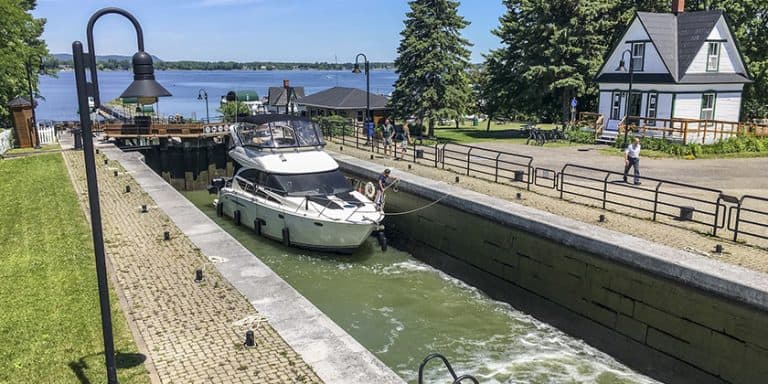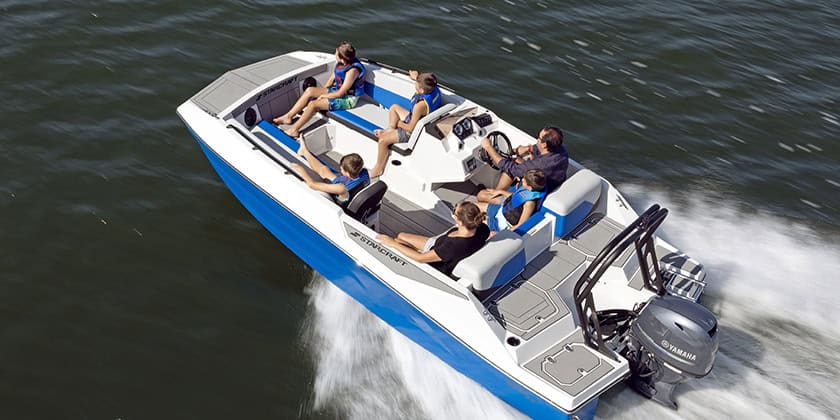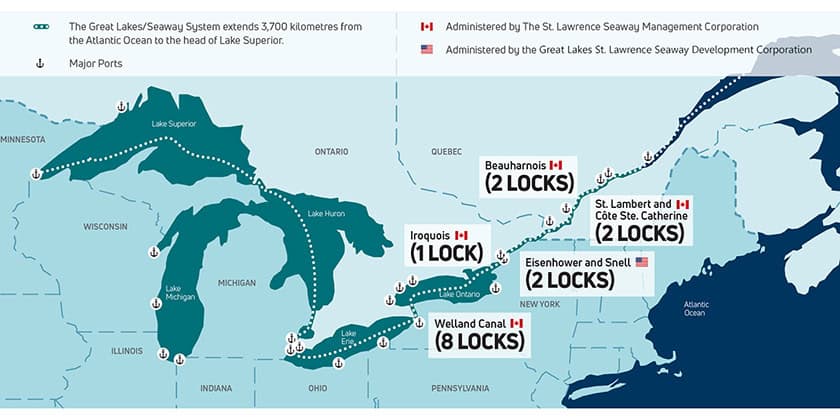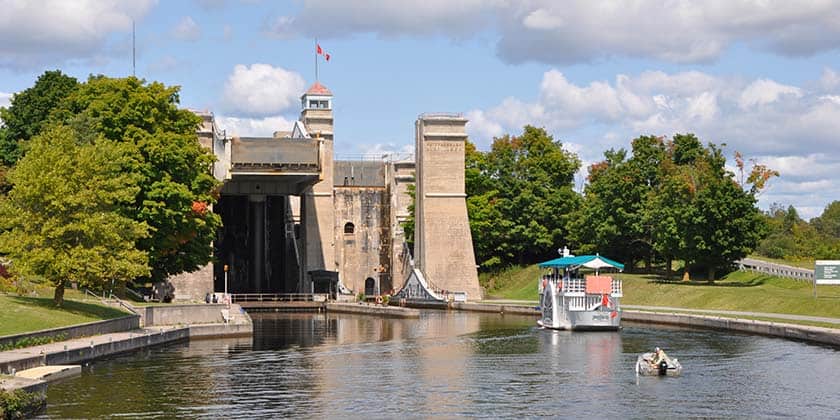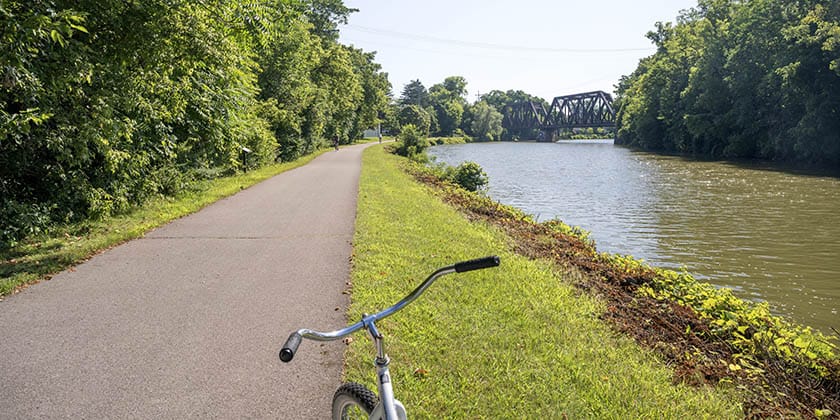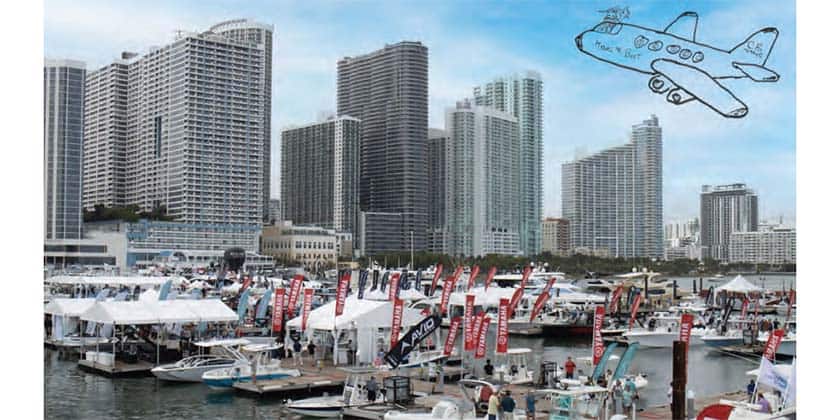15 Neat Facts About The Construction Of The Peterborough Lift Lock
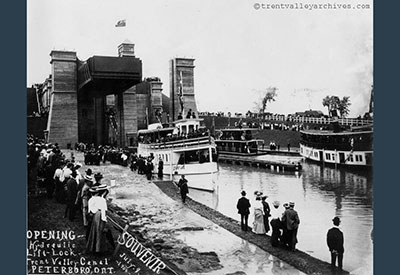
July 25 2016
1. The Peterborough Lift Lock on the Trent-Severn Waterway—aka Lock 21—was built between 1896 and 1904 in an era when the strength of people, horse and steam power was shaping the transportation systems of a growing nation.
2. The Lift Lock was part of a larger construction project to canalize the Otonabee River—allowing the Kawartha Lakes to connect with Peterborough’s commercial centre.
3. To establish the foundations for the Lift Lock at Armour Hill during construction, 76,000 cubic yards of sand, soil and gravel were excavated until the limestone bedrock was reached 40 feet down.
Photo: Opening Day: July 9th, 1904
4. The presswells for the hydraulic rams were excavated a further 75 feet into the rock.
5. A foundation of granite blocks—some weighing a whopping ten tons—was lowered to the bottom to provide a footing for the rams.
6. When completed, over 26,000 cubic yards of concrete had been poured, without a single piece of *reinforcing steel.
7. The Lift Lock was the first lock to be built out of concrete, and at the time was the largest structure ever built in the world with unreinforced concrete.
8. The installation of the steel chambers and hydraulic rams by Dominion Bridge Company of Montreal began in 1901 and was completed in 1904.
9. The original steelwork is still in use today, modified by zinc refinishing and welding on the boat chambers. (New aluminum gates were added during the mid-60s.)
10. Peterborough’s Richard Birdsall Rogers (aka R.B. Rogers)—a civil and mechanical engineer from Peterborough who studied at McGill—oversaw the design and construction of the Lift Lock.
11. As originally built, the Lift Lock could generate all the necessary compressed air and water pumping pressure to operate the gate pivot engine, gate water seals and control systems by opening a water penstock set in the lock’s upper reach.
12. The natural gravity fall of water powered the lock’s internal machinery. This included a Taylor hydraulic air compressor, water turbines, water driven gate-engines and pumps.
13. The dual lifts are the highest hydraulic boat lifts in the world, with a lift of 19.8 m (65 ft).
14. The Lift Lock opened July 9th, 1904 to a huge crowd (see photo at top of post).
15. The Lift Lock, which was designated a National Historic Site in 1979, took eight years to construct.
For all photos visit: http://www.ptbocanada.com/journal/2016/6/22/neat-facts-about-the-construction-of-the-peterborough-lift-lock




